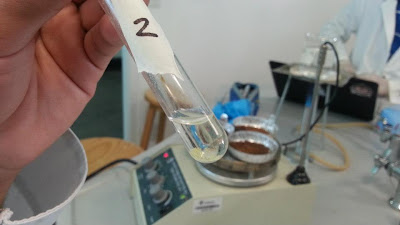

All carbonates (CO 3 2-) of alkali earth metal ions are precipitatesĬaCO 3, MgCO 3, SrCO 3 are precipitates and they are white.AgCl is a white precipitate and AgBr is a light yellow precipitate.Īlkaline earth metals forms both precipitates and solutions. But their coloursĪre different due to different halide ions. We can decide which ions (cations or anions) are in theĬompound by comparing colours of different precipitates.Įxample: Compare AgCl and AgBr precipitates. Why colours of precipitates are important?Ĭolours of precipitates help to identify compounds. Solid phase and deposited at bottom of the solution after kept it sometime to settle down. If there is a precipitate in the aqueous solution, we can see it easily. Lead +2 ion, it forms lead chloride (PbCl 2) white precipitate. As an example chloride ion can be given.Ĭhloride ion with sodium ion form sodium chloride which is highly soluble in water. But with some cation, they form precipitates. Precipitates categorized as anions and cations : This section is bit different.Precipitates of s block, p block, d block elements.

What is unique about AgBr Frenkel pairs is that the interstitial Ag i+ are exceptionally mobile, and that its concentration in the layer below the grain surface (called the space-charge layer) far exceeds that of the intrinsic bulk.In this tutorial we cover following lessons. What makes AgBr Frenkel pairs unique in chemistry? Unlike the other silver halides, iodargyrite (AgI) contains a hexagonal zincite lattice structure. The coordination geometry for AgBr in the NaCl structure is unexpected for Ag (I) which typically forms linear, trigonal (3-coordinated Ag) or tetrahedral (4-coordinated Ag) complexes. What is the coordination geometry for AgBr in the NaCl structure? The electrons which absorbs radiations of color that from the visible or UV spectrum and undergo transition from ground state to excited state within d-sub shells,so it is d-d transitions of electrons. The silver salts likeAgBr and AgI are colored, the color of transition metal ions is due to the presence of unpaired electron. Why are silver salts like AgBr and Agi coloured? Thus, the silver salts like AgBr and AgI are colored. With the increase in polarization, the intensity of compound color increases. Precipitate is insoluble in ammonia solution of any concentration Precipitate is almost unchanged using dilute ammonia solution, but dissolves in concentrated ammonia solution to give a colourless solution Silver fluoride is soluble, and so you don’t get a precipitate…. You can use the Ksp (the solubility product) to determine the solubility. According to the solubility rules, all silver salts are insoluble in water with the exception of silver nitrate, silver acetate and silver sulfate. Be(OH)2, Mg(OH)2 are insoluble in water.Ī precipitate will form if the resulting compound is insoluble in water. SrSO4, BaSO4 are white colour precipitates. CaCO3, MgCO3, SrCO3 are precipitates and they are white. Precipitates of alkaline earth metals Alkaline earth metals forms both precipitates and solutions. is soluble in concentrated ammonia solution and forms a complex but is insoluble in ammonia solution. iodide ions give a yellow precipitate of silver iodide. What is the Colour of silver bromide PPT?ĭifferent coloured silver halide precipitates form, depending on the halide ions present: bromide ions give a cream precipitate of silver bromide. You can verify AgBr’s solubility by checking the solubility value and solubility product value. If it is explained in other way, you can see a pale yellow color solid is deposited at the bottom of the aqueous solution. Silver bromide is insoluble in water and form a pale yellow precipitate in water.


 0 kommentar(er)
0 kommentar(er)
